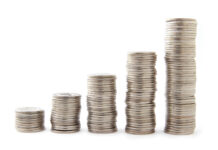One of the critical aspects of this management is understanding and calculating exchange rates, a concept that often seems complex but is crucial in our increasingly globalized world. This article aims to demystify the process of exchange rate calculation, providing you with a comprehensive understanding of its basics and the key factors that influence it.
One of the critical aspects of this management is understanding and calculating exchange rates, a concept that often seems complex but is crucial in our increasingly globalized world. This article aims to demystify the process of exchange rate calculation, providing you with a comprehensive understanding of its basics and the key factors that influence it.We will guide you through a step-by-step process to calculate exchange rates, making it easy for you to grasp and apply. To ensure you gain a practical understanding, we will delve into real-world examples of exchange rate calculations. Furthermore, we will highlight common pitfalls to avoid when calculating exchange rates, ensuring you maintain accuracy in your financial dealings. For those seeking to enhance their financial acumen, we will also share advanced techniques in exchange rate calculation. Finally, we will explore how you can leverage this knowledge in your financial planning, enabling you to make informed decisions that can positively impact your financial health. Whether you’re a student, a business professional, or someone interested in understanding the world of finance better, this article is designed to equip you with the knowledge and skills to navigate the complex world of exchange rates confidently. So, let’s embark on this journey of financial discovery together.
1. Understanding the Basics of Exchange Rate Calculation
The process of calculating exchange rates may seem complex, but it is actually quite straightforward once you understand the basics. The exchange rate between two currencies is determined by the interaction of supply and demand in the foreign exchange market. Knowing how to calculate exchange rates is a fundamental skill for anyone involved in international trade or finance.
Exchange rates fluctuate constantly due to a variety of factors, including economic indicators, market speculation, and geopolitical events. These fluctuations can have significant impacts on the profitability of international business transactions. Therefore, it is crucial to understand how these rates are calculated and how to interpret them. A tip sheet on exchange rate calculation can be a handy tool for quick reference.
When calculating exchange rates, it’s important to understand that they are typically expressed as a ratio. For example, if the exchange rate between the US dollar and the Euro is 1.2, this means that 1 US dollar is equivalent to 1.2 Euros. To calculate the value of a certain amount of money in a different currency, you simply multiply the amount by the exchange rate. For instance, if you have 100 US dollars and the exchange rate is 1.2, you would have 120 Euros after the exchange.
2. Key Factors Influencing Exchange Rates
Several elements come into play when determining the exchange rates. Interest rates, for instance, play a significant role. When a country’s interest rates rise, its currency often strengthens due to an influx of investments in that country’s markets. Conversely, if the interest rates decrease, the currency may weaken. Another crucial factor is inflation rates. Countries with lower inflation typically see an appreciation in the value of their currency. The prices of goods and services increase at a slower rate where the inflation is low.
Political stability and economic performance also influence exchange rates. Foreign investors inevitably seek out stable countries with strong economic performance in which to invest their capital. A country with such positive attributes will draw investment funds away from other countries perceived to have more political and economic risk. Furthermore, a country’s terms of trade, which refer to the ratio of export prices to import prices, can also impact. If the price of a country’s exports rises by a greater rate than that of its imports, its terms of trade have favorably improved. Increasing terms of trade shows greater demand for the country’s exports. This, in turn, results in rising revenue from exports, which creates a higher demand for the country’s currency.
3. Step-by-Step Guide to Calculating Exchange Rates
Understanding how to calculate exchange rates is crucial for anyone dealing with international transactions. Whether you’re a business owner, a traveler, or an investor, knowing how to do the math can help you make informed decisions. Here is a step-by-step guide to help you calculate exchange rates:
- Identify the currency pair: The first step is to identify the two currencies you are interested in. For example, if you are looking to exchange US dollars for Euros, your currency pair would be USD/EUR.
- Find the exchange rate: Next, you need to find the current exchange rate for your currency pair. This information can be found on financial news websites, banks, or in your ZEN.COM App.
- Do the math: Once you have the exchange rate, you can calculate how much of the second currency you will get for your amount of the first currency. Simply multiply your amount by the exchange rate. For example, if you have 100 USD and the exchange rate is 0.85, you would get 85 Euros.
It’s important to remember that exchange rates fluctuate constantly due to changes in the global economy. Therefore, the rate you see one day might be different the next. Always check the current rate before making any transactions. Additionally, keep in mind that banks and currency exchange services often charge a fee for converting money, so the amount you get might be less than what you calculate.
For a more detailed look at how to calculate exchange rates, check here: https://www.zen.com/blog/guides/how-to-calculate-an-exchange-rate/ .
4. Practical Examples of Exchange Rate Calculations
Let’s delve into a real-world scenario to illustrate the application of the exchange rate formula. Suppose you’re planning a trip to Europe and you need to convert your US dollars to Euros. The current exchange rate is 1 USD = 0.85 EUR. If you have 500 USD, you would multiply this by the exchange rate to determine how many Euros you would receive. In this case, 500 USD * 0.85 = 425 Euros. This is a straightforward example, but it’s important to remember that exchange rates can fluctuate due to a variety of factors, some of which may be undefined. Therefore, it’s crucial to check the current rate before making any conversions. Additionally, fees may apply when you exchange your money, so the actual amount you receive may be less than the calculated amount.
5. Common Mistakes to Avoid When Calculating Exchange Rates
When dealing with foreign currency exchange, it’s crucial to avoid certain pitfalls that can lead to inaccurate calculations. One common mistake is neglecting to account for the exchange rate spread. This is the difference between the buying and selling price of a currency, and it can significantly impact the final amount you receive. Another common error is failing to consider the time of conversion. Exchange rates fluctuate throughout the day, and the rate at the time of your transaction may not be the same as when you initially checked.
Additionally, many people overlook the impact of transaction fees on their exchange rate calculations. These fees can vary widely between different banks or exchange services, and they can significantly affect the total cost of your transaction. It’s also important to remember that some currencies are pegged to others, meaning their value is directly linked to the value of another currency. Ignoring this fact can lead to incorrect calculations. To avoid these common mistakes, consider using tip sheets or online tools that can help you accurately calculate exchange rates.
6. Tips for Accurate Exchange Rate Calculations
Ensuring accuracy in exchange rate calculations is crucial in various financial transactions. Here are some tips to help you achieve this:
- Use Reliable Sources: Always refer to trusted financial institutions or official government websites for the most accurate and current exchange rates.
- Consider Time Factors: Exchange rates fluctuate throughout the day. Therefore, it’s essential to use the most recent rates for your calculations.
- Understand the Market: Familiarize yourself with the factors that influence exchange rates, such as inflation rates, interest rates, and political stability. This knowledge can help you anticipate changes and make more accurate calculations.
- Use Online Calculators: There are numerous online tools and calculators that can help you calculate exchange rates accurately and quickly. However, ensure they are from reliable sources.
Remember, accuracy in exchange rate calculations can save you from potential financial losses and misunderstandings. Therefore, it’s worth taking the time to ensure your calculations are as precise as possible.
7. Advanced Techniques in Exchange Rate Calculation
As we delve deeper into the realm of exchange rate calculation, it becomes evident that the process is not as straightforward as it may initially seem. There are numerous factors that can influence the exchange rate, and understanding these can significantly enhance the accuracy of your calculations. Advanced techniques in exchange rate calculation involve the use of sophisticated financial models and algorithms, which take into account a multitude of variables such as inflation rates, interest rates, political stability, economic performance, and speculation.
Creating a checklist can be a helpful tool in ensuring that all relevant factors are considered. This checklist might include items such as current economic indicators, forecasts for inflation and interest rates, and geopolitical events that could impact currency values. Additionally, it’s important to stay updated with the latest news and trends in the global economy, as these can have a direct impact on exchange rates. By incorporating these advanced techniques into your exchange rate calculations, you can ensure a more accurate and comprehensive result.
8. How to Use Exchange Rate Calculations in Financial Planning
Integrating exchange rate calculations into your financial planning can significantly enhance your decision-making process. This is particularly true for businesses and individuals with international financial obligations or investments. Exchange rate calculations can help you anticipate potential gains or losses due to currency fluctuations, enabling you to make informed decisions about when and where to allocate your resources.
Moreover, understanding exchange rate calculations can also help you mitigate risks associated with foreign exchange. For instance, if you’re planning to invest in a foreign market, knowing how to calculate exchange rates can help you assess the potential return on investment. By accurately predicting how exchange rates might fluctuate, you can strategically time your investments to maximize profits and minimize losses.
In conclusion, exchange rate calculations are an essential tool in financial planning. They provide valuable insights into the global financial market, allowing you to make informed decisions and strategize effectively. Whether you’re an individual investor or a multinational corporation, understanding how to calculate and apply exchange rates can significantly impact your financial success.


































































